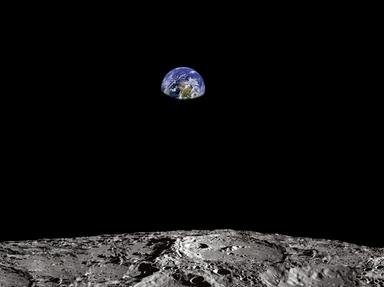Quiz Answer Key and Fun Facts
1. Three of the original seven Mercury astronauts were test pilots at the legendary Edwards AFB in the California desert when they were recruited to apply for the NASA program. Who were they?
2. Which astronaut graduated from the Naval Academy and became a USN aviator before being selected for the original Mercury Project in 1959? He was chosen to pilot the first Freedom capsule on a non-orbital flight in May 1961.
3. Which astronaut began flying his family's plane when he was 15, graduated from Annapolis in 1945, and flew during the Korean War? He was the only one of the original Mercury Seven who also flew in the Gemini and Apollo projects.
4. Which astronaut was the last of the original seven to fly into space during the Mercury project? Though last, his 22 orbits and 34.5 hour flight time was greater than those of the previous Mercury pilots combined? He died in 2004, and there was an unsuccessful attempt to launch his ashes into space in 2007.
5. Which astronaut was the second American in space, piloting the Liberty Bell 7 in a non-orbital flight in 1961? When the Bell returned to earth, the hatch opened prematurely and he was lifted from the ocean after the capsule sank. Nonetheless, in commanding his Gemini 3 flight in 1964, he named his vessel the Molly Brown -- as in "the unsinkable."
6. Which astronaut was the second American to orbit the earth on May 24, 1962 and then took a leave from the Mercury program to train as an aquanaut for the Navy's SEALAB Project? In 1964, he suffered an injury which affected mobility in his left arm, requiring his removal from flight status, and he then returned to the SEALAB Project.
7. Which astronaut was removed from flight status due to an inner ear condition in 1964? He was able to return to the Astronaut program in 1969, and at the age of 47, commanded the Apollo 14 mission to become the fifth man to walk on the moon.
8. Which astronaut had been a fighter pilot during World World II in both the European and Pacific theaters and was the only original astronaut never to fly a Mercury mission? He became a civilian employee 1963, but returned to flight duty in 1972 to command an Apollo shuttle test mission.
9. Which of the original Mercury Seven astronauts retired from the NASA program in 1970, and went public with his long held beliefs in the existence of unidentified flying objects -- also known as "flying saucers" and "extraterrestrial crafts?"
10. Which astronaut was the only Marine pilot to be accepted into the original Mercury Project, having been a highly-decorated fighter pilot during the Korean War. On his first Mercury flight he discovered the existence of showers of brilliantly-lit flying objects which he called "fireflies."
Source: Author
drushalli
This quiz was reviewed by FunTrivia editor
bloomsby before going online.
Any errors found in FunTrivia content are routinely corrected through our feedback system.
